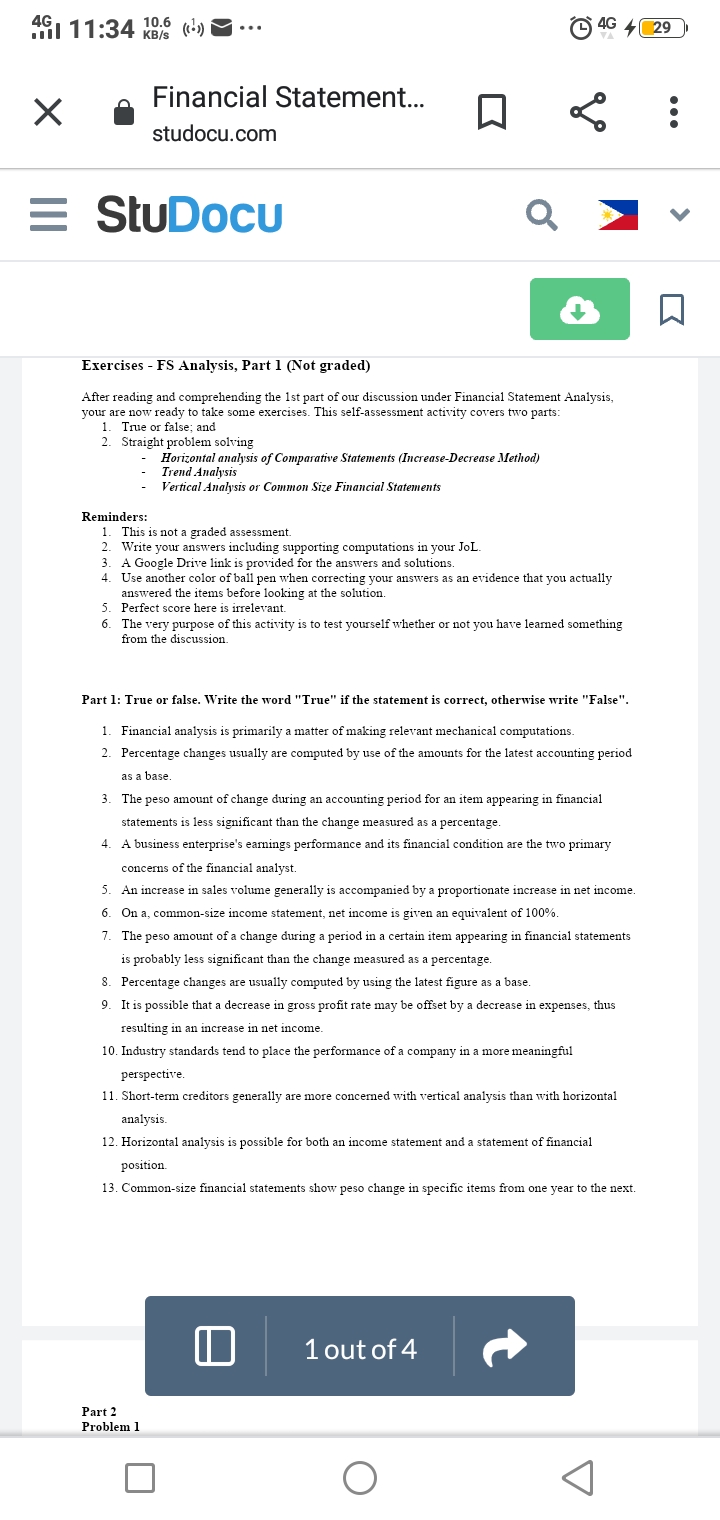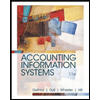Financial Statement.. studocu.com StuDocu
Business/Professional Ethics Directors/Executives/Acct
8th Edition
ISBN:9781337485913
Author:BROOKS
Publisher:BROOKS
Chapter8: Subprime Lending Fiasco-ethics Issues
Section: Chapter Questions
Problem 3.7EC
Related questions
Question

Transcribed Image Text:491 11:34 10.6 (-)
4G
4 29
KB/s
Financial Statement.
studocu.com
= StuDocu
Exercises - FS Analysis, Part 1 (Not graded)
After reading and comprehending the 1st part of our discussion under Financial Statement Analysis,
your are now ready to take some exercises. This self-assessment activity covers two parts:
1. True or false; and
2. Straight problem solving
Horizontal analysis of Comparative Statements (Increase-Decrease Method)
Trend Analysis
Vertical Analysis or Common Size Financial Statements
Reminders:
1. This is not a graded assessment.
2. Write your answers including supporting computations in your JoL.
3. A Google Drive link is provided for the answers and solutions.
4. Use another color of ball pen when correcting your answers as an evidence that you actually
answered the items before looking at the solution.
5. Perfect score here is irrelevant.
6. The very purpose of this activity is to test yourself whether or not you have leaned something
from the discussion.
Part 1: True or false. Write the word "True" if the statement is correct, otherwise write "False".
1. Financial analysis is primarily a matter of making relevant mechanical computations.
2. Percentage changes usually are computed by use of the amounts for the latest accounting period
as a base
3. The peso amount of change during an accounting period for an item appearing in financial
statements is less significant than the change measured as a percentage.
A business enterprise's earnings performance and its financial condition are the two primary
concerns of the financial analyst.
5. An increase in sales volume generally is accompanied by a proportionate increase in net income
6. On a, common-size income statement, net income is given an equivalent of 100%.
7. The peso amount of a change during a period in a certain item appearing in financial statements
is probably less significant than the change measured as a percentage.
8. Percentage changes are usually computed by using the latest figure as a base.
9. It is possible that a decrease in gross profit rate may be offset by a decrease in expenses, thus
resulting in an increase in net income.
10. Industry standards tend to place the performance of a company in a more meaningful
perspective.
11. Short-term creditors generally are more concerned with vertical analysis than with horizontal
analysis.
12. Horizontal analysis is possible for both an income statement and a statement of financial
position.
13. Common-size financial statements show peso change in specific items from one year to the next.
1 out of 4
Part 2
Problem 1
...
Expert Solution
This question has been solved!
Explore an expertly crafted, step-by-step solution for a thorough understanding of key concepts.
This is a popular solution!
Trending now
This is a popular solution!
Step by step
Solved in 2 steps

Knowledge Booster
Learn more about
Need a deep-dive on the concept behind this application? Look no further. Learn more about this topic, accounting and related others by exploring similar questions and additional content below.Recommended textbooks for you

Business/Professional Ethics Directors/Executives…
Accounting
ISBN:
9781337485913
Author:
BROOKS
Publisher:
Cengage

Accounting Information Systems
Finance
ISBN:
9781337552127
Author:
Ulric J. Gelinas, Richard B. Dull, Patrick Wheeler, Mary Callahan Hill
Publisher:
Cengage Learning

Business/Professional Ethics Directors/Executives…
Accounting
ISBN:
9781337485913
Author:
BROOKS
Publisher:
Cengage

Accounting Information Systems
Finance
ISBN:
9781337552127
Author:
Ulric J. Gelinas, Richard B. Dull, Patrick Wheeler, Mary Callahan Hill
Publisher:
Cengage Learning